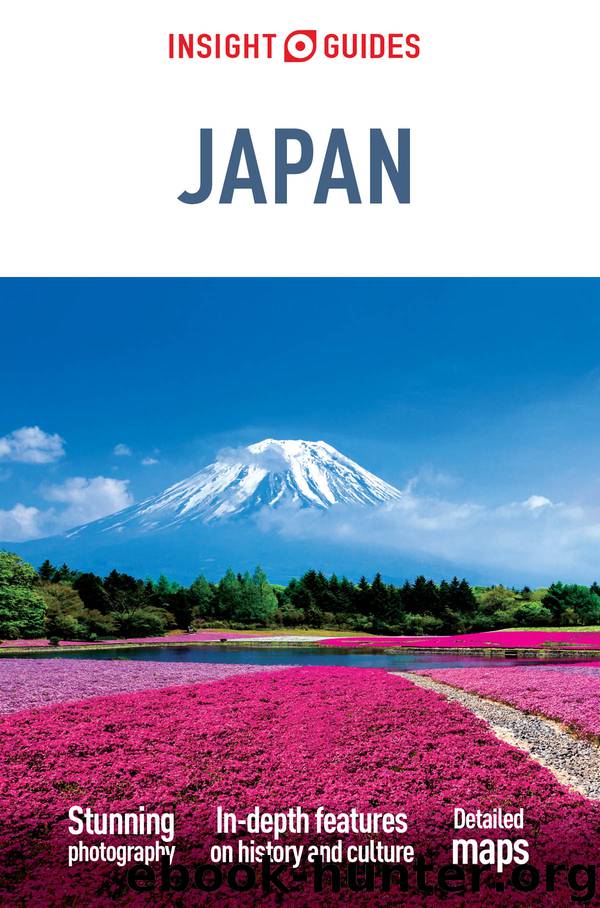Insight Guides: Japan by Insight Guides

Author:Insight Guides
Language: eng
Format: epub
Tags: Travel, Japan
Publisher: APA
Published: 2016-01-19T16:00:00+00:00
Few in Japan will forget where they were at 2.46pm on 11 March 2011, when a magnitude 9.0 earthquake, the fifth-largest recorded in world history, struck 72km (44 miles) east of Sendai in the northwestern Pacific Ocean.
The earthquake shook Tohoku for six minutes, in parts of Miyagi Prefecture registering the maximum earthquake intensity of 7 on Japan’s intensity scale. The original shockwave was so large it was felt as far away as Kyushu.
Within 30 minutes, the original earthquake had been followed by magnitude 7.4 and 7.2 aftershocks. Over the next year, up to the first anniversary, more than 1,800 aftershocks measuring magnitude 4 or greater hit the region. But in many respects Japan was ready for that, having learned from previous experience. The aftermath of the Kobe earthquake of 1995 saw earthquake-resistant building regulations come into effect and greater public awareness of how to react in a major quake.
The country, however, wasn’t ready for what happened straight after the first quake in 2011. Within minutes, Japan’s tsunami warning system kicked into effect, predicting a wave of up to 6 metres (20ft) to hit Miyagi within 30 minutes; lesser waves were predicted for elsewhere. What came was sadly far, far worse.
In Rikuzentakata in Iwate Prefecture, a 13-metre (43ft) wave breached the 6.5-metre (21ft) sea wall and engulfed the entire town. Eighty percent of the town’s 8,000 houses were swept away and more than 2,000 were killed or remain unaccounted for. Similar horrors played out in many other towns and villages along Tohoku’s east coast. By 2015, 15,891 deaths had been confirmed in Tohoku, 6,152 people had been injured, and 2,584 were still recorded as missing.
With waves funnelling up to 38 metres (125ft) in height in some areas, and with 560 sq km (216 sq miles) of land inundated, the devastation was vast. Around 4.4 million households were left without electricity, over 45,000 buildings were destroyed and some 144,000 damaged. Affected towns were left with 25 million tons of debris.
Then, of course, there was the Fukushima nuclear accident, the worst since the Chernobyl disaster in 1986. Studies following the accident found that the Japanese nuclear plants had not been adequately protected against tsunami and that the accident was “man-made”. All the country’s reactors were closed down in the aftermath of Fukushima meltdown. Before March 2011, nuclear energy had met 30 percent of the country’s needs. Following the closure of all of its nuclear plants, Japan started to rely more heavily on fossil fuels, importing coal and liquefied natural gas, and thus increasing carbon dioxide emissions. Politicians and business sector have pushed to reopen nuclear energy plants, although public anger against nuclear power has been growing. Before any reactor is restarted, it has to meet stringent new safety requirements. As of 2015, very few of the country’s 48 reactors were in operation.
In 2013, it was revealed that the Fukushima plant had continued to leak highly radioactive water into the Pacific Ocean, a fact that had been denied. Are Tokyo and the rest
Download
This site does not store any files on its server. We only index and link to content provided by other sites. Please contact the content providers to delete copyright contents if any and email us, we'll remove relevant links or contents immediately.
China Rich Girlfriend by Kwan Kevin(3905)
The Silk Roads by Peter Frankopan(3792)
Annapurna by Maurice Herzog(2851)
Hot Thai Kitchen by Pailin Chongchitnant(2821)
Full Circle by Michael Palin(2785)
Okonomiyaki: Japanese Comfort Food by Saito Yoshio(2395)
City of Djinns: a year in Delhi by William Dalrymple(2140)
The Ogre by Doug Scott(2122)
Photographic Guide to the Birds of Indonesia by Strange Morten;(2093)
Tokyo by Rob Goss(2024)
Vietnam, Cambodia, Laos & Northern Thailand by Lonely Planet(2021)
Tokyo Geek's Guide: Manga, Anime, Gaming, Cosplay, Toys, Idols & More - The Ultimate Guide to Japan's Otaku Culture by Simone Gianni(1953)
Discover China Travel Guide by Lonely Planet(1871)
Everest the Cruel Way by Joe Tasker(1832)
China (Lonely Planet, 11th Edition)(1805)
Lonely Planet China(1760)
China Travel Guide by Lonely Planet(1747)
Top 10 Dubai and Abu Dhabi by DK Travel(1722)
Iranian Rappers And Persian Porn by Maslin Jamie(1715)
